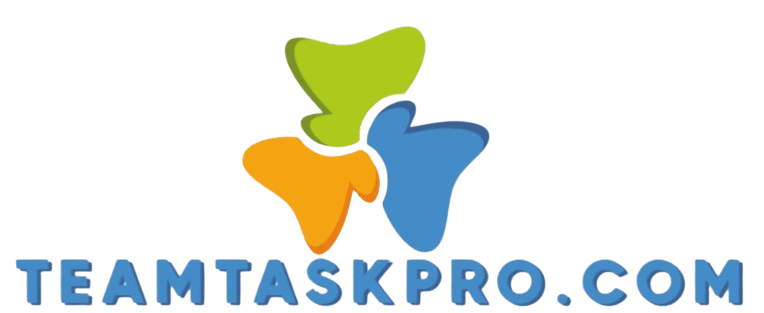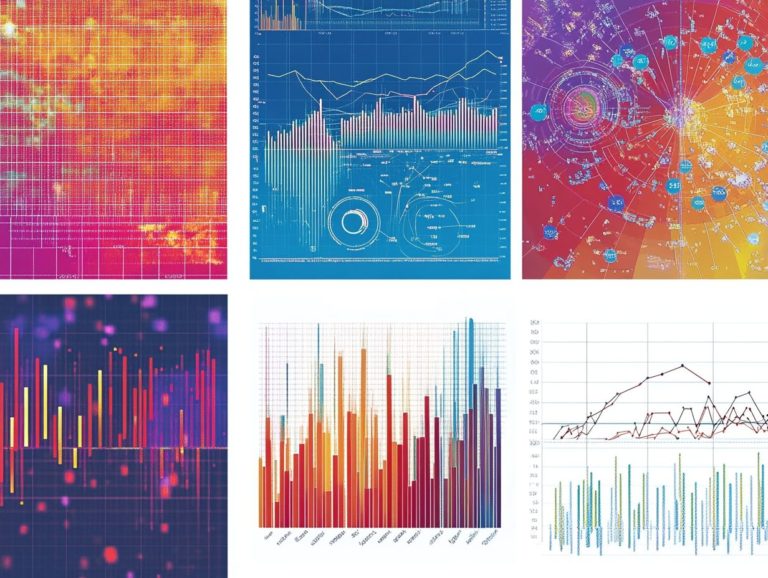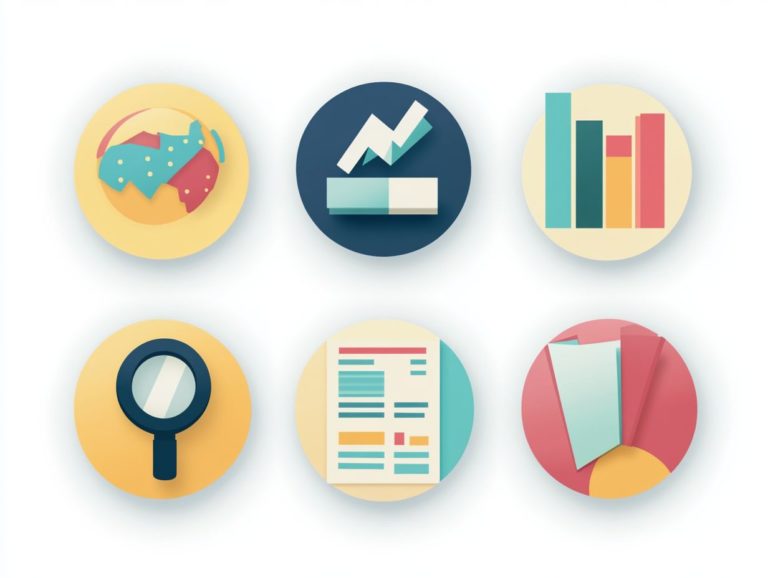how to build a comprehensive reporting framework
In today s data-driven landscape, establishing a robust reporting framework is essential for organizations like yours that aspire to make informed decisions. This article delves into what a comprehensive reporting framework entails, shedding light on its key components and the myriad benefits it offers.
From enhancing your data collection and analysis processes to the details of building the framework itself, you ll find everything you need to know. You’ll discover best practices for maintaining and adapting your framework to keep up with your evolving goals.
Let s dive in and discover how you can transform your reporting today!
Contents
- Key Takeaways:
- Understanding Reporting Frameworks
- Benefits of a Comprehensive Reporting Framework
- Key Components of a Reporting Framework
- Steps to Building a Comprehensive Reporting Framework
- Best Practices for Maintaining and Updating a Reporting Framework
- Frequently Asked Questions
- What is a comprehensive reporting framework?
- Why is it important to have a comprehensive reporting framework?
- How do I start building a comprehensive reporting framework?
- What are some key elements to include in a comprehensive reporting framework?
- How do I ensure the accuracy and quality of the data in my reporting framework?
- How can I make my comprehensive reporting framework more effective?
Key Takeaways:

A comprehensive reporting framework improves data collection and analysis, leading to more informed decision-making.
When building a reporting framework, it is important to identify goals and objectives, define key metrics and KPIs (Key Performance Indicators), and implement appropriate data collection and analysis processes.
To maintain an effective reporting framework, regular review and analysis, as well as flexibility to adjust for changing goals and objectives, are key best practices.
Understanding Reporting Frameworks
Grasping reporting frameworks is crucial for organizations aiming to elevate their management reporting systems. These frameworks offer a structured approach to data analysis and communication that gives you the power to make informed decisions about financial performance, customer satisfaction, and your overarching business strategy.
By aligning with established reporting frameworks, you can enhance reporting accuracy and ensure compliance with regulatory standards. This also boosts stakeholder engagement through greater transparency of information.
Definition and Purpose
The definition and purpose of reporting frameworks center on providing you with a systematic structure. This structure enhances your decision-making processes while ensuring that accountability measures are met across various dimensions of performance.
These frameworks are essential tools for organizations that aim to improve data integrity and reliability. They allow for consistent reporting standards that can be uniformly applied across different departments and sectors.
By establishing clear guidelines, you foster transparency in operations. This enhances stakeholder trust and facilitates well-considered choices. Reporting frameworks also help align your organizational objectives with regulatory requirements.
They ensure that performance is measured effectively and that the insights gathered can lead to actionable strategies for improvement.
Benefits of a Comprehensive Reporting Framework
A comprehensive reporting framework offers a wealth of benefits that can greatly enhance operational efficiency, reduce data duplication, and tackle quality issues.
This approach not only strengthens your management reporting system but also facilitates effective metrics tracking, giving you the power to make informed decisions throughout the organization.
Improving Data Collection and Analysis
Improving data collection and analysis within a reporting framework starts with establishing a centralized repository. This repository guarantees data integrity and facilitates quality assurance throughout the reporting process.
This centralized system acts as a foundational element, enabling you and other stakeholders to access accurate and timely information. This significantly enhances your decision-making framework.
By integrating advanced quality assurance measures, you can regularly validate and clean your data. This minimizes the risk of errors that could jeopardize your analytical outcomes.
Implementing robust data governance policies ensures that all inputs remain consistent and reliable. This allows you to focus on deriving insights rather than correcting inconsistencies.
Ultimately, a well-structured repository not only streamlines data manipulation but also gives you and your team members the power to make informed choices with confidence, relying on solid analytical results.
Key Components of a Reporting Framework

The key components of an effective reporting framework include a robust structure designed to integrate performance metrics, Environmental, Social, and Governance (ESG) performance indicators, and diverse reporting mechanisms.
This comprehensive approach ensures that your reporting is both accurate and relevant, allowing for well-considered choices and strategic alignment.
Data Sources and Metrics
Data sources and metrics are pivotal in shaping the effectiveness of your reporting framework. They influence the quality of insights you gain from Key Performance Indicator (KPI) tracking and directly affect the accuracy of your reports.
A well-structured reporting system thrives on a variety of data inputs, from sales figures and customer feedback to web analytics and operational metrics. Each source brings a unique perspective, and synthesizing them accurately enhances your decision-making processes.
Choosing the right metrics streamlines tracking and empowers you to respond quickly to market changes. High-quality data is your key to success; it forms the foundation for reliable reports and informed actions that drive your success.
Reporting Processes and Tools
Use effective reporting processes and tools to enhance your framework. These elements facilitate process improvement and streamline the collection and presentation of data.
By leveraging analytical software, automated reporting systems, and data visualization tools, you can transform raw data into insightful narratives that drive decision-making and accountability. These solutions simplify your reporting workflow and foster collaboration among stakeholders, ensuring everyone has timely access to critical information.
Integrating performance metrics within your reporting processes allows for continuous monitoring and refinement, leading to more accurate forecasts and strategic planning. Embracing these innovations enhances transparency and significantly improves efficiency in your reporting efforts.
Steps to Building a Comprehensive Reporting Framework
Crafting a comprehensive reporting framework requires you to follow a few key steps.
- Start by identifying your goals and objectives.
- Define the key metrics and KPIs that will guide your efforts.
- Establish effective processes for data collection and analysis, ensuring they are robust and reliable.
- Select suitable reporting tools that align seamlessly with your organizational strategy, enhancing clarity and insight in your reporting endeavors.
Identifying Goals and Objectives
Identifying clear goals and objectives forms the bedrock of a successful reporting framework. It ensures your organization aligns with its sustainability performance and overarching business strategy.
By establishing measurable targets, you can track progress and make informed, data-driven decisions that enhance your ESG performance.
This approach not only helps you recognize key performance indicators but also facilitates stakeholder engagement by clearly communicating your organization’s commitments.
As you navigate increasing pressure from regulators and consumers to showcase responsible practices, a well-defined framework mitigates risks and highlights your dedication to sustainable development.
Ultimately, this alignment fosters internal accountability and enhances your organization s reputation in the marketplace, demonstrating that sustainability is genuinely woven into your core business objectives.
Defining Key Metrics and KPIs

Defining key metrics and KPIs is essential for monitoring and evaluating the effectiveness of your reporting framework. This ensures that your organization can track performance metrics consistently and accurately.
These indicators act as vital benchmarks. They allow your teams to assess progress toward strategic goals and operational objectives. Focusing on relevant KPIs provides valuable insights into your performance. This not only helps identify areas for improvement but also informs crucial decision-making processes.
A well-defined set of metrics fosters a culture of accountability. Employees become aware of expectations and can align their efforts with organizational priorities.
Effective tracking of KPIs empowers you and your leaders to make data-driven decisions. This paves the way for sustained growth and competitiveness in an ever-evolving marketplace.
Creating Data Collection and Analysis Processes
Creating robust data collection and analysis processes is crucial for ensuring that the information gathered is accurate and free from quality issues. This ultimately enhances the overall effectiveness of your reporting framework.
Implement methodologies like organized data collection, standardized data entry techniques, and regular audits. These practices minimize discrepancies and make your work easier.
Consider integrating automated tools and software that facilitate real-time data validation. This ensures that only quality information is captured and processed. Involving cross-functional teams in developing these processes fosters a collaborative environment that enhances accountability and trust in your data.
A well-structured approach to data collection and analysis gives you the power to make informed decisions and drive better business outcomes fast!
Implementing Reporting Tools
Implementing the right reporting tools is essential for enhancing operational efficiency and ensuring accuracy within your framework. This allows you to generate timely and relevant reports.
These tools significantly streamline your data collection and analysis processes. They enable your team to focus on interpreting insights rather than getting bogged down in the data itself. With user-friendly interfaces and customizable dashboards, you can improve the visibility of key performance indicators while fostering a culture of well-considered choices.
By utilizing appropriate reporting tools, you minimize the risk of errors. This provides a solid foundation for strategic planning and resource allocation. Ultimately, adopting such technologies enhances your responsiveness to market changes, improves compliance with regulations, and secures a notable competitive advantage in today s fast-paced environment.
Best Practices for Maintaining and Updating a Reporting Framework
Maintaining and updating a reporting framework is crucial for its long-term effectiveness. Conduct regular reviews and analyses of existing processes while adapting to evolving goals and objectives.
This ensures that your reporting remains relevant and accurate over time.
Regular Review and Analysis
Regularly reviewing and analyzing your reporting framework is essential for identifying areas ripe for improvement. This ensures that reporting accuracy remains consistent and reliable over time.
These practices help you pinpoint specific shortcomings and enable you to adapt your framework to ever-evolving industry standards and regulations. By consistently examining the effectiveness of your current processes and methodologies, you uncover inefficiencies and enhance your operational performance.
This cycle of continuous improvement supports well-considered choices and fosters accountability within your teams. Incorporating comprehensive feedback from stakeholders during these reviews strengthens your reporting mechanism, cultivating trust and transparency.
Engaging in these evaluations establishes the foundation for sustainable growth. It also ensures that your reporting practices align seamlessly with your strategic goals.
Adjusting for Changing Goals and Objectives

Adjusting to evolving goals is crucial for a solid reporting framework. It keeps your organization aligned with changing business strategies.
This adaptability helps you stay in tune with market dynamics. It also fosters a culture of continuous improvement.
When your reporting framework matches changing targets, teams can spot inefficiencies quickly. They can focus on the performance metrics that really count.
This flexibility gives you and your decision-makers the power to respond to challenges and seize opportunities. It drives accountability and collaboration across departments.
By nurturing a change-embracing environment, you enhance strategic alignment. This ultimately leads to sustained growth and success in a competitive landscape.
Frequently Asked Questions
What is a comprehensive reporting framework?
A comprehensive reporting framework is an organized method for collecting, analyzing, and presenting data. For those looking to enhance their skills, understanding how to transition to advanced reporting practices can help measure performance and inform decisions effectively.
Why is it important to have a comprehensive reporting framework?
This framework provides a clear structure for reporting. It ensures consistency and accuracy in data collection and communication.
How do I start building a comprehensive reporting framework?
Start by defining your objectives and goals. This helps identify key metrics and relevant data for your organization.
What are some key elements to include in a comprehensive reporting framework?
Include the scope and objectives of reporting, the people involved, data sources, reporting frequency and format, and roles. A feedback loop for improvement is essential too.
How do I ensure the accuracy and quality of the data in my reporting framework?
Implement a data governance plan. Set data standards, validate data, and regularly review your sources.
How can I make my comprehensive reporting framework more effective?
Regularly review and adjust your reporting process. Make sure reports are user-friendly and accessible. Incorporating data visualization can also make reports more impactful.






